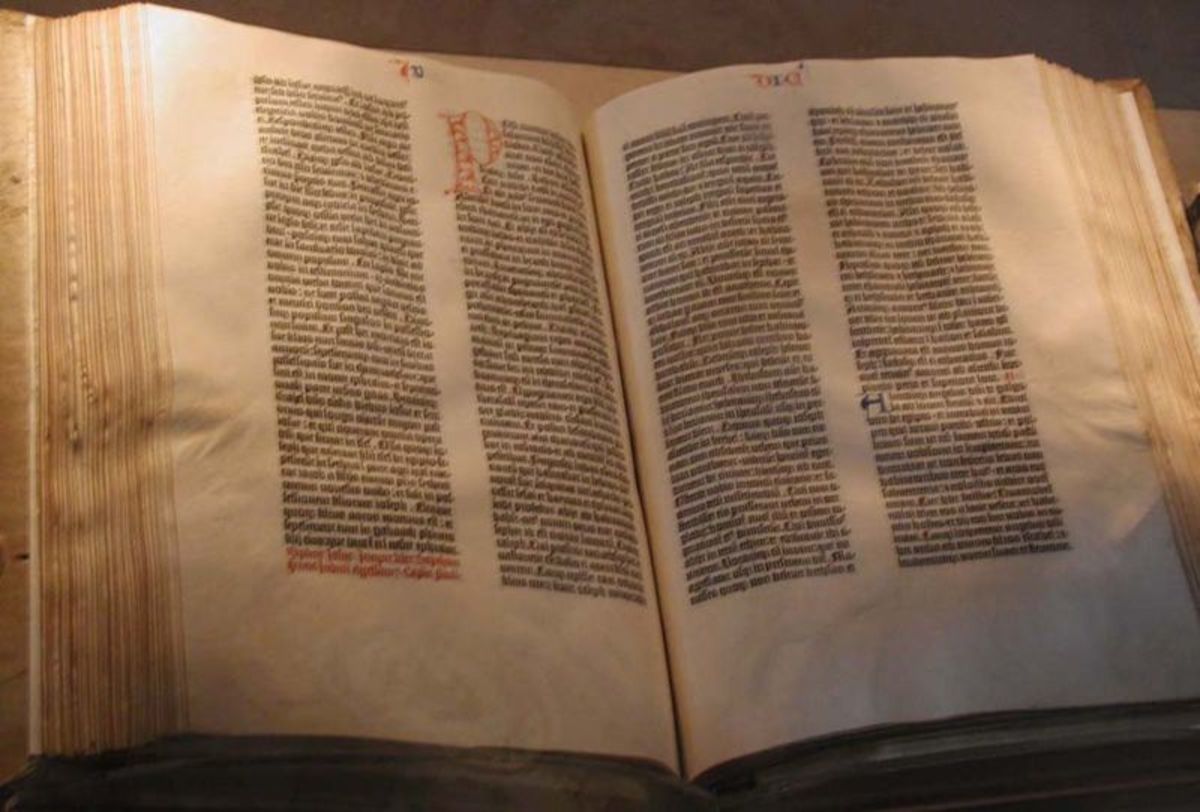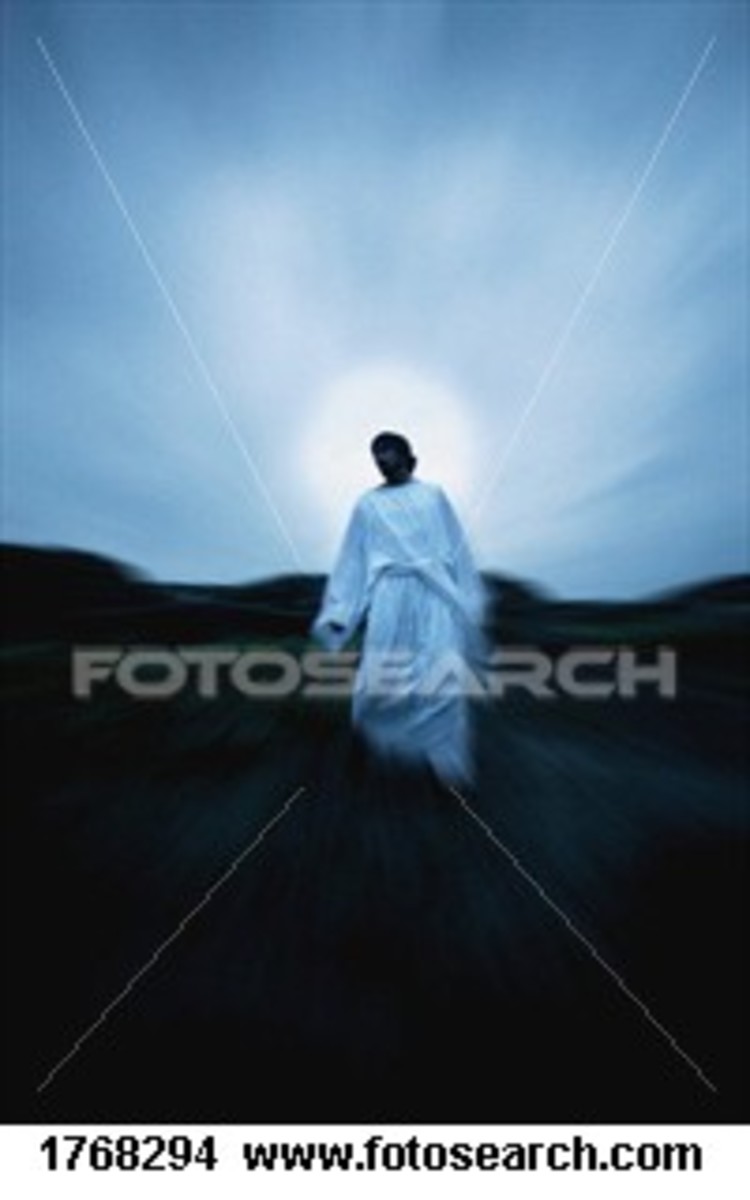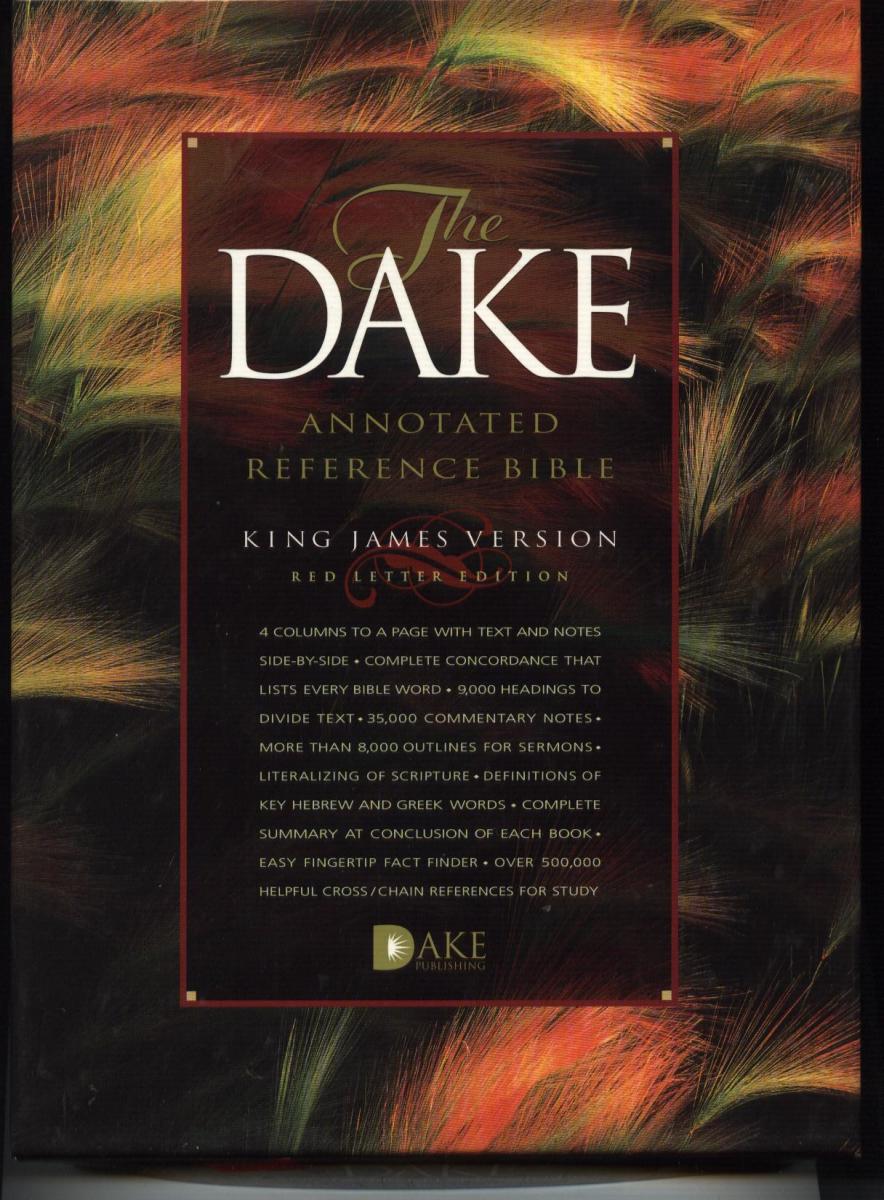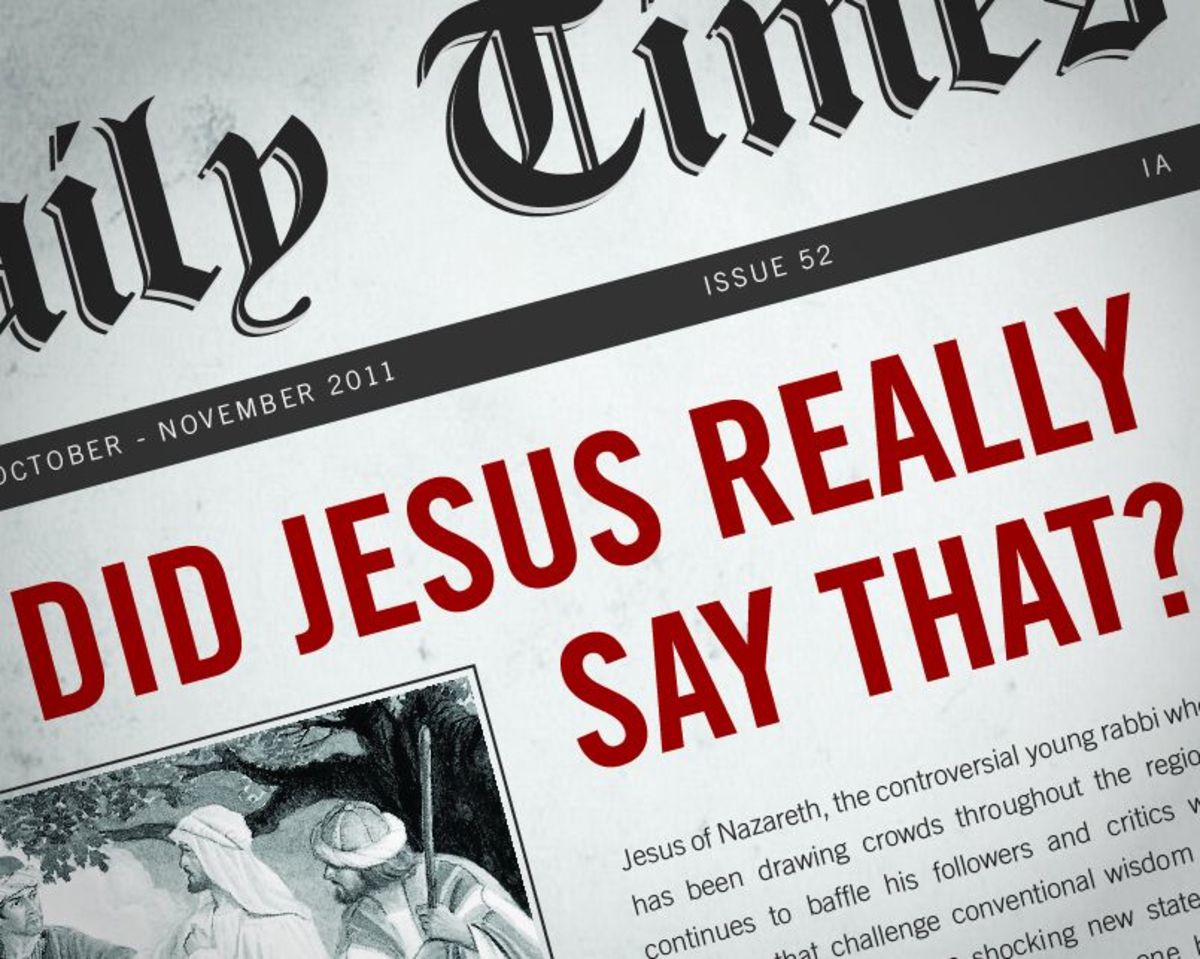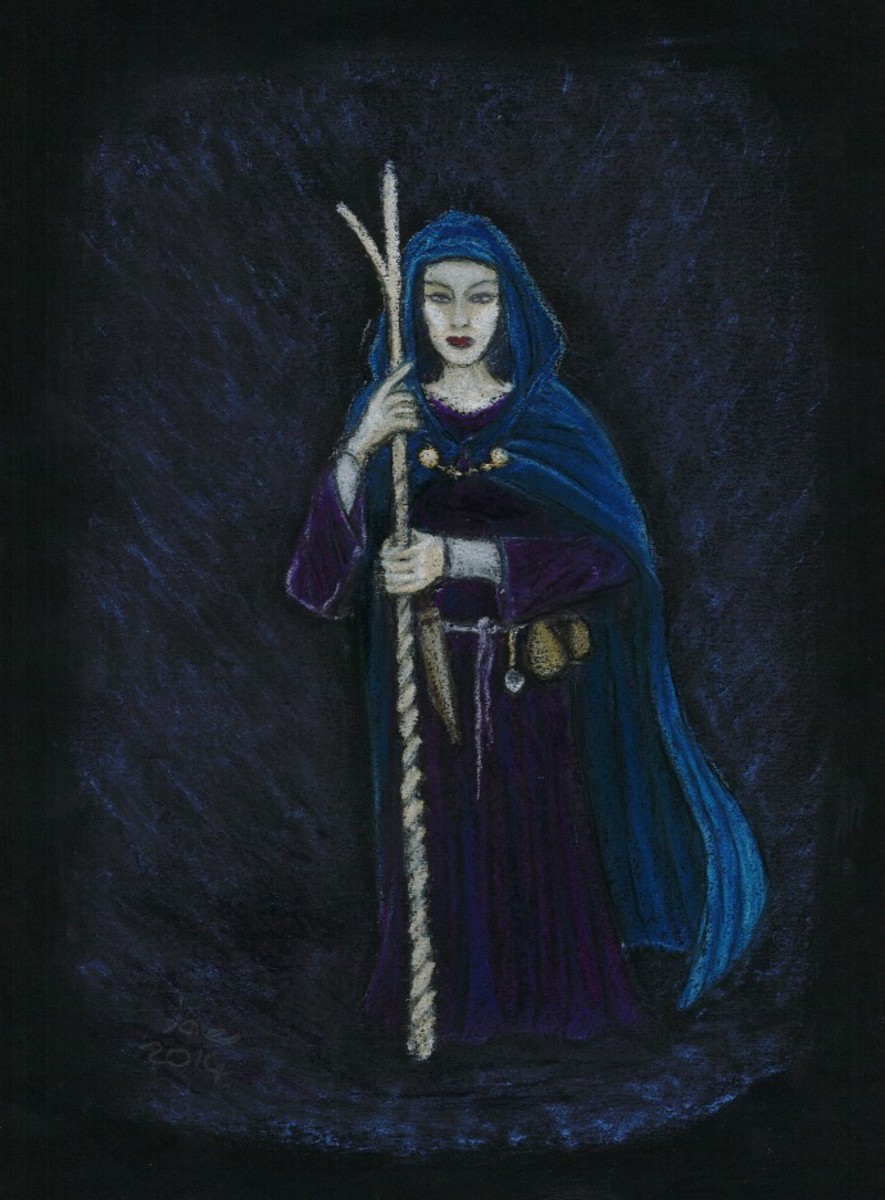Gnostic Jesus?
The canonical teachings of Jesus Christ have been analyzed, meanings debated, individual words pondered, all since the pen hit the paper of the Gospels (Matthew, Mark, Luke & John). But other things have been questioned: are those his actual words? At the dawn of Christianity, hundreds, if not thousands, of individual writings included differing 'sayings of Jesus', all individually claiming to be the true words. Some matched other texts while others were completely different. How do we know the currently excepted Gospels aren't fraudulent? The Gospel of Luke for example was written by no eyewitness. Rather it was written by an early Christian who wanted to tell another of the story of Christ by asking people and reading other texts (which is clearly stated in Luke 1:1-4). There were differing accounts & words very early, so did Luke read the true stories? Other texts including the claimed words of Jesus were thrown out (well, burned) as frauds by the early Church. But some, later declared bull, almost made it into the New Testament of the Bible. The "Book of Revelation" barely squeezed into Cannon. It was running neck-in-neck with another text (i.e. both texts had their group of supporters). That other text was the "Apocalypse of Peter". Thankfully, copies of its entirety survived its tossing. And it is an afterlife work rather than prophetic as is the Book of Revelation. It, in a very detailed & gruesome manner, describes Hell. It goes into the specific punishments for individual sins. But in the end, it was cast-out and the Book of Revelation stood victorious. Other texts also were on the thin-wire when the great debate of what was to be the New Testament was ongoing. The letters of John ("First John", "Second John" & "Third John") also made it into the Bible by a hair. But what about the books that almost made it, such as the Apocalypse of Peter, shouldn't their strong consideration give them some creditability? In the end, the books of the New Testament were chosen by the meetings (Councils) of the "Church Fathers" (such as St. Clement, St. Ignatius, St. Irenaeus, St. Cyril & many others). They chose the books based on their consistency, their parallels with the other excepted texts. But how did they choose the first text to parallel others to?
Early Christianity was a divided mess. A jumbled bag of different Christian schools, all with different core beliefs of who Jesus was and what his core message was. After a few decades, the main schools (those with the most adherents) gathered the texts together which fit their teachings. And the Church wasn't the only school. In the past, we felt that Christianity was mostly the Church, with small groups of dissidents playing in the background, like the Green Party in the shadow of classic American parties. This idea was based on the writings from the Church Fathers, which obviously survived, specifically those on heretics (those which taught different from the Church). But in 1945 a discovery which would change the way we look at the birth of Christianity was made. In the rocky desert of Egypt, a cache` of very old books were found. This purposely hidden collection is known as the "Nag Hammadi Library" (being found near the town of Nag-Hammadi). It is a collection of writings which we had never seen, some of which we had heard of via the Church Fathers, but we had never seen them in their whole contextual form. Once translated out of their Coptic language (similar to Greek), the cat was out of the bag per-say. They were all generally similar in beliefs, just as the grouping of the Church Cannon are all similar. The Nag Hammadi Library showed historians & scholars that the Church was not the ruler of the block, rather there were the two bad boys (like the Republican & Democratic Parties are for the United States). The other group had been known through the 'fathers', but we never had any idea that it was to such a scope. This group were the "Gnostics" (Gnosis meaning "Knowledge" in Greek). One could carefully compare the difference between the Gnostics & Church as between the Greek Philosophers & Greek Priests. But this would hide the true amount of differences between them. We will go into their true differences soon. But first I want to show you just how early off the line of Christianity began segmenting:
One text in the Nag Hammadi Library is the "Gospel of Thomas" (yes, there were other 'Gospels'). The Gospel of Thomas is not like the Canonical Gospels in being a story of Jesus' life. Rather it is just a list of 114 sayings (quotations) of Jesus (including a few short conversations between the disciples & Jesus). Scholars believe that the original (the Nag Hammadi version being a copy) was written around 20 years after the death of Jesus (i.e. around 50 CE --the Canonical Gospel of Mark is thought to have been written around 70 CE).
In 1897 a damaged leaf of papyrus was found in Egypt at Oxyrhynchus by excavators Grenfell & Hunt. The shortish text ("Oxyrhynchus Papyrus 654") is the beginning of a Gospel. We now know that it is the beginning of the Gospel of Thomas. But there are differences. Let's take a look at one of the first verses (following the prologue) in both copies:
Nag Hammadi Library:
"Jesus said, 'Let him who seeks continue seeking until he finds. When he finds, he will become troubled. When he becomes troubled, he will be astonished, and he will rule over the all.' "
Oxyrhynchus Papyrus:
"Let not him that seeketh cease (seeking till he) find, and when he findeth (he shall marvel, and) having marvelled he shall reign, and (having reigned) he shall rest." (The Church Father --Clement of Alexandria-- quoted this verse as "He shall not cease from seeking until he find, and having found, he will be amazed, and having been amazed will reign, and having reigned will rest."
You can see the difference between the two versions. The difference is theological. The theology of the first belonging to the Gnostics and the second to the Church (conventional Christianity). Christianity became many right after Jesus' death, which is a reoccurring event following the death of any "prophet" (Buddha, Muhammad, Zoroaster, Mani and now we know, Jesus).
Even the early Church was segmented by various interpretations & teachings. Some taught the "Trinity" (God, Jesus & Holy-Spirit being one entity) while others denounced it. Some said the flesh was bad while others said it was made by God & thus good. But in the end, they all agreed at least in one respect: the Church. The Gnostics were similar, they had their Orthodoxy and then they had connected branches. One branch was sternly focused around chastity & abstinence. But what was the Orthodoxy?
Anti-"YHWH". "YHWH" (Yahweh) is the name of God in the Old Testament (Hebrew Bible), i.e. the god of the Jewish People (Israel). The Gnostics called him "Yaltabaoth" (also "Sakla[s]" & "Samael" and the title of "Demiurge"), but there is no doubt that the texts are talking of YHWH. But they were not anti-Semites. Rather they were against the Old Testament God, not the people therein. They believed that Yaltabaoth was the child of a higher power, a human-like Being (containing the negative emotions such as jealousy, anger, egotism, etc) which was created, out of ignorance, by a 'Good' Being (though created in ignorance, the creator was not ignorant, rather "she" was lacking the whole power found in the Highest Being --she was also a creation). But calling the Gnostics anti-YHWHists is an over-simplification of the orthodoxy; definitely that many texts do not blame Saklas for his acts and want him to be re-born. Rather the orthodoxy was the belief in a God higher than the God of the Church (YHWH).
But this orthodoxy was not the foundation of Gnosticism, rather it is in the name ('knowledge'). The core identity of the Gnostics was philosophy & scholarship. The Gnostics were all about the "Mind", "Thought" & "Wisdom" instead of the "Spirit" & "Law" of the Church. (The above "she" was called "Sophia", meaning "Wisdom".) The Gnostics believed, due to everyone having a Mind (brain), each individual could learn on his/her own and figure out what the "truth" was. This is what caused the Church to be so hostile towards them (to the point of slandering the Gnostics; saying that they ate babies and were constantly having orgies & being drunk), seeming that the Church was based on the Church members (bishops, deacons & priests) teaching the populace. The Church was not only a hierarchy, but told that the laymen should just listen and not think. This was the exact opposite of the Gnostics; groups of regular people would go over texts & ideas, debate them and think. There was no hierarchy. A big difference between the Church & Gnostics was that women could preach / teach in gnostic gatherings. And with philosophy, not only did many texts quote Greek works, but one of the works in the Nag Hammadi Library was a translation of part of Plato's "Republic".
It is believed that the concept of Anti-YHWHism started with a conventional Christian called Marcion. Marcion of Sinope in Pontus was a member of the Church. He had a problem with something however. He looked at the Old Testament and saw an angry & aggressive God, but Jesus was a passive & loving man with the "Father". Marcion could not see Jesus as being the son of the Jewish God (again, Marcion was not anti-semitic). Thus Marcion said that Jesus was the son of a Higher God ("Good God") than YHWH and called YHWH a creation of the 'Good God'. Marcion said that Jesus' father was the highest Being while YHWH was the lower "creator" of the world. Due to his teachings, Marcion was excommunicated in Rome in 144 CE. However, Maricion's ideas gained popularity throughout the east of the Roman Empire, to the point of the Church Father Justin calling him one of the most dangerous of heretics. Marcion may have started the idea of YHWH not being "the Father", but he didn't start the Gnostic idea of a Higher God.
"Simon the Gnostic". Sadly many have equated this Simon with Simon Magus of the New Testament book of "Acts". But the Church Fathers themselves didn't equate these two men. Simon the Gnostic was around right after Jesus' death and is most detailedly mentioned by Irenaeus, bishop of Lyons, in 180 CE. Simon (the Gnostic) taught that there was a highest Good Being (God) which created "Ennoia" ("thought" --equivalent to Sophia / Wisdom). Ennoia, with a 'woopsy', created many divine Beings (called Angels & Archangels) which were impure & thus evil to an extent. These Angels captured their mother Ennoia and threw her into the world which they created, our world (i.e. they caused her to be born as a human & forget her nature --a reoccurring theme of Beings & ordinary people in Gnostic texts). While Jesus was the savior for people, Simon was said to be the savior of Ennoia (God's daughter if-you-will).
So gnosticism dates back to before 180 CE. But is there any evidence that Jesus was the teacher of Gnosticism?
Well, first off, it is debated whether or not Gnosticism began prior to Jesus (i.e. there was a pre-Christian Gnosticism). Remember, the foundation of the Gnostics is "Mind", "Wisdom" & a Highest Intelligence (Higher God). Well, there is much evidence that the Gnostics were a branch-off (or evolution) of the BCE philosophical-religion known as "Hermeticism". Hermeticism was said to have been founded by the "Thrice Great Hermes" soon after Moses, but the earliest Hermetic texts date back to around 300 BCE. Scholars believe that Hermeticism was the result of Greek philosophical / cultural influence on the Near East (Israel, Egypt, Persia, Mesopotamia) caused by Alexander the Great's Empire. Gnosticism includes many Greek elements (terms, concepts, titles, names, traditions, etc). Hermetic texts also speak of God as "Mind" and talk of 'worldly powers' (Angel-like Beings) which are Evil & want to trap us in their power.
Also, the gnostic text "the Paraphrase of Shem", which is found in the Nag Hammadi Library, might be a Christianized version (or altered Gnostic) of a pre-Christian text known as "the Paraphrase of Seth".
Thus, gnostic ideas probably existed, in form, prior to Jesus' existence.
So could Jesus have been influenced by Hermetic ideas and preached them, thus accounting for the Christian Gnosticism?
But the Canonical texts speak nothing of him learning such ideas! Two things actually. Firstly, around 20 years of Jesus' life are unaccounted for in the Canonical Gospels. From age 14 to his baptism at around age 30, the Gospels say nothing of travels, learnings, well... anything. There is a text out there which says that Jesus was in India for that time period, debating the Bramins (Hindu priests) just as he debated the Jewish priests in Jerusalem. Interestingly, some gnostic texts have Hindu concepts within, such as "The Thunder, Perfect Mind" --or they could be considered as Taoist. The "Acts of Thomas" has Jesus' disciple Thomas going to preach the message throughout India. Even if it is a forgery, the question remains of what Jesus was doing at his pinnacle years. Did Jesus spend that time in Alexandria, specifically in the Wonder of the World, the Library of Alexandria, reading through scroll (text) after scroll of theology, philosophy, etc (500,000 scrolls were housed there)? (Hermetic texts were there as well.) It is a question that will probably never be definitively answered.
The second thing is that the Church Fathers & Canonical Gospels state that there are teachings of Jesus which the public man doesn't know of. Churches usually ignore this fact for obvious reasons. Let's start with a letter from the Church Father Clement of Alexandria:
"As for Mark, then, during Peter's stay in Rome he wrote an account of the Lord's doings, not, however, declaring all of them, nor yet hinting at the secret ones, but selecting what he thought most useful for increasing the faith of those who were being instructed. But when Peter died a martyr, Mark came over to Alexandria, bringing both his own notes and those of Peter, from which he transferred to his former book the things suitable to whatever makes for progress toward knowledge. Thus he composed a more spiritual Gospel for the use of those who were being perfected. Nevertheless, he yet did not divulge the things not to be uttered, nor did he write down the hierophantic teaching of the Lord, but to the stories already written he added yet others and, moreover, brought in certain sayings of which he knew the interpretation would, as a mystagogue, lead the hearers into the innermost sanctuary of that truth hidden by seven veils." -- Letter from Clement of Alexandria to Theodore ("Secret Gospel of Mark"). These "perfected" persons are mentioned in the Canonical letters of Paul (note: the following New Testament quotes are from the King James Masonic Version, 1965-66 edition {"Holy Bible, Red Letter Edition, Masonic Edition, Cyclopedic Indexed"}):
"Howbeit, we speak wisdom among them, that are perfect: yet not the wisdom of this world, nor of the princes of this world, that come to naught: but we speak the wisdom of God in a mystery, even the hidden wisdom which God ordained before the world unto our glory..." -- 1 Corinthians 2:6-7.
But why would Jesus have concealed teachings? Well, first, it isn't said that Jesus concealed teachings, but rather that he taught specific things to certain people. Second, Buddha did a similar thing according to later monks. They say that Buddha told the laymen that which they could comprehend and live by. But others were taught the true mysteries of the universe, for they could understand. This actually would make sense when it comes to mankind. Most people are those which just want to live life & enjoy life in a sort'a level of ignorance. But others want to know the world; its hidden truths at any cost, or else they remain uneasy, lost or empty. The psychologist Carl G. Jung wrote much about this human duality. Look at it through Jesus' eyes (theoretically). The majority of people, as today, just wanted to know how to live and enjoy their lives. But a minority want to know how things came about. Thus Jesus taught the majority populace simple ideas about living & being a righteous individual. Then Jesus taught to the "perfect" (searchers if-you-will) the cosmologies, cosmogonies & the nature of man & Being. Then the Gospel of Mark says something interesting:
"And when he (Jesus) was alone, they that were about him, with the twelve (disciples), asked of him the parable. And he (Jesus) said unto them, 'Unto you it is given to know the mystery of the kingdom of God: but unto them that are without, all these things are done in parables: That seeing they may see, and not perceive; and hearing they may hear, and not understand; lest at any time they should be converted, and their sins should be forgiven them.' And he (still Jesus) said unto them, 'Know ye not this parable? and how then will ye know all parables?' " -- Mark 4:10-13. Jesus said the layman will be given the parables to find the mysteries, but they will not understand. (Jesus doesn't explain the meanings of the parables --except for one). Despite being the 'key', churches today do not do much interpretation of the parables. The "heretics" did much interpretation of the parables ironically. But then it is shown that Jesus' own disciples do not comprehend the parable at hand and says that if they can't figure out that one, they can't understand all of the others. And Jesus had to explain it to them. The Gospel of Thomas also mentions hidden teachings. Jesus takes Thomas aside and talks to him (what is not said). After words, the other disciples ask Thomas what Jesus had told him. Thomas responded by saying that if he tells them just one of the three things he was told, they (the disciples) would stone him (Thomas) to death. I.e. what he was told would infuriate the others and he wasn't going to tell them.
All of this talk of mysteries, secret teachings, why would Jesus even be operating like some cult leader? Well, it was actually a common practice (well, more common than one would think); the practice of secrecy that-is. Mithraic, Cybele, Conon, Isis, Atargatis & other cults throughout the Roman Empire had secret rituals & teachings which to this day remain largely unknown. This idea of secrecy began in ancient Egypt & Greece. Why? Mainly so that the teachings & traditions could not be altered, ruined, lost via corruption, misuse, misinterpretation. Look at conventional Christianity. The Spanish Inquisition, the Crusades and other tragedies were the result (partially) of interpretation & corruption of the Canonical texts (meanings, words, etc). Just imagine, if there were secret teachings of Jesus, if power-hungry men & 'evil' people got their hands on the ideas, image what chaos would ensue from their personal interpretations.
Okay, but is there any other evidence of teaching non-conservative ideas?
There are a few unique mosaics in basements & catacombs in Rome, Jerusalem & elsewhere which were produced by early Christian followers (all pre-400 CE). These mosaics depict Jesus in different scenarios (one shows him preaching to his followers). But they are not unique for just that. All have Jesus holding something, a reed. Well, what's so important about that? The reed is a symbol of secret knowledge. The reed is seen in the hands of 'wise-men' in many depictions of the Greek Mystery Religions (especially the Eleusinian Mysteries --Elysian-- which, like Christianity, taught of the way to obtaining a good eternal afterlife). Let's see what the Gospels say:
"...they draped him with a scarlet cloak, and they braided a crown out of thorns and put it on his head and a reed in his right hand." -- Matthew 27:28-29 and then "...they...took the reed and began hitting him upon his head." -- Matthew 27:30. Today, most people say that the reed was just the Jews making fun of his claim to 'royalty', just as the crown and scarlet cloak are. This can be debated. The Jewish authorities (Pharisees & Sadducees) knew of the existence of cults & mystery faiths. So they could have thought that Jesus was a cult leader and thus made him up as one to expose him. But the crown designates royalty! Yes, but it was also of significance in the Eleusinian Mysteries. A crown of vines was put onto the head of an initiate or was worn by high members. And the robe works with either-or as well.
But all of this is nothing but circumstantial evidence. Some solid evidence is needed. And what is more solid than the physical...
We will talk of the scientific analysis done on the famed "Shroud of Turin" (the supposed image of Jesus upon his burial cloth).
One study found that a Roman coin was over each eye, specifically a coin from the reign of Tiberius (the emperor during Jesus' day) which had the image of a philosopher's staff on one of them and the name of the emperor's mother upon the other. The burial custom of coined-over-eyes is against Jewish law (the "Talmud"). On this account, people say that all the physical evidence of the coins must be wrong. But I find that to be such a narrow minded response. My grandmother is the daughter of strict orthodox Jews and is very proud of her Jewish blood & history. People would think that she was a follower of Jewish religious law, seeming that she went to Temple, had a menorah, has Jewish prayer plaques & a picture of the Western Wall. But she eats bacon at breakfast. So, them same is with Jesus; just because he was of Jewish blood doesn't mean he had to be observant. The Canonical texts are Judaic, but it is debated on how observant he himself was. Gnostic texts, such as the "Gospel of Judas", show Jesus as a person again Jewish tradition. But even those Canonical Gospels cause the question to arise. In the 12th chapter of the Gospel of Mark, while Jesus is preaching in the Jerusalem Temple, he has a conversation with a Jewish scribe. During which, the scribe says to Jesus: "...to love him (God) with all of the heart, and with all the understanding, and with all the soul, and with all the strength, and to love his neighbour as himself, is more than all whole burnt-offerings and sacrifices." -- Mark 12:33. Sacrifices in the Temple of Jerusalem are one of the most, if not the most, important laws of the "Torah" (Holiest books of the Hebrew Bible --first five); the Torah book of "Leviticus" is mostly about sacrifices & offerings. Remember, the Temple of Jerusalem was considered to be the "House of God" and the pagan defilement of the sanctuary was seen as the greatest of insults to not only the Jewish people, but to the Jewish God (YHWH). But that was the scribe speaking, what did Jesus say about it? Jesus responded with, instead of reprimand, full agreement, saying: "...Thou art not far from the kingdom of God." -- Mark 12:34. This is only one of many similar statements. Thus, Jesus was going against a half or whole millennium of Jewish, not just tradition, but Law (said to have been decreed by YHWH himself to his prophet Moses).
Most would say that he had called himself the 'King of the Jews', so thus he was a steadfast Jew. First off, I could claim to be the true President of the USA while preaching that the Bill of Rights is incorrect for the nation. Secondly, Matthew, Mark & Luke may have Jesus quietly saying "Yes, it is as you say" when asked if he is the King of the Jews, but the Gospel of John has Jesus more auditory. (Remember, the question occurred in a Roman administrative building, so none of the Gospel writers would have heard the exchange. John, being a gnostic style writer, would have been more knowledgeable of paganism and thus was probably able {more likely} to speak to a Roman soldier whom was there. I say that John is a gnostic-like writer due to his use of Gnostic ideas & terms in the Gospel. The term "Logos" ("word") & its context is a strongly Gnostic / Hermetic term.) When asked the question, Jesus questions him (Pontious Pilate): "Is that your own idea...or did others talk to you about me?" -- John 18:34. (Note: this paragraph uses the "New International Version" {1994} for quotes; yes, I have a lot of Bibles.) Jesus soon says, relating to the original question: "My kingdom is not of this world. ...my kingdom is from another place." -- John 18:36. Pilate then says "You are a king, then!" And Jesus responds with "You are right in saying I am a king." -- 18:37. Not only does Jesus not say that he is the King of the Jews, but Jesus, during the conversation states: "...my servants would fight to prevent my arrest by the Jews." -- 18:36. Note: "the Jews". If believing to be the King of the Jews, Jesus would have stated "my people". He seems to be distancing himself from the Jewish people. And notice that the original part of Jesus' response to '"You are a king, then" is similar the the answer to the King question in Mark, Matthew & Luke (which are Jewish influenced Christian texts). But the main point is that one of the Gospels has the question asked, but Jesus refuses to say that he is the Jewish King, rather the King of another world.
So let's get back to the coined eyes of the shroud.
Coins over the eyes of the deceased is a almost strictly Greek tradition. Originally, the custom was done due to traditional Greek religion (mythology). In Greek Mythology, the divider between the world of the living and that of "Hades" (afterlife-world) is a physical boundary: the river Styx. This river had a ferryman who takes the deceased safely across the river. But nothing is every free; the ferryman requires two coins for the trip. If you don't have them, he won't take you and thus you remain stuck between life & death for all eternity. And if you try to cross anyway, there is a vicious guard-dog at the gates with 3 heads (or 50) called Kerberos. Thus, the family or friends of a deceased person would put a coin over each eye so that he/she can cross Styx. But this act could of had symbolic reasoning as well; most probably in Mystery Religions. The Eleusinian Mysteries were all (mostly) about the secret rituals & teachings pertaining to having the best & most powerful of afterlives. They were said to have had the key to the "Elysian Fields" (the Greek version of the "Kingdom of Heaven" --eternal peace, enjoyment, pleasure, etc). Thus the Eleusinian teachings probably expanded on the simple coin custom to become symbolic.
But Jesus had never been to Greece. Firstly, 20 years are missing; he could have been in Greece. But, if not, Greek customs were very well known throughout the Near East, including Egypt (Alexandria) & Israel (Jerusalem), since Hellenism (heavy Greek influencing) caused by Alexander the Great's conquests.
There is an interesting detail on one of the coins covering the shroud's eyes. On the Tiberius coin is the illustration of a staff, a unique staff, an "Astrologer's Staff". At Jesus' birth, Mary (his mother), Joseph (his step-father) & his newborn self were visited by 3 specific men. "...they saw the young child with Mary its mother, and, falling down, they did obeisance to it. They also opened their treasures and presented it with gifts, gold and frankincense and myrrh." -- Matthew 2:11. But who were these men? "Magi" -- Matthew 2:1. The Magi (Greek: ma'goi) were special priests of Babylon (and then Persia). They were "astrologers" --readers of the stars to determine the "Fates" (futures). They also were cosmologists and used the scientific-method in order to better understand the world & produce more accurate cosmologies / cosmogonies (especially during the Sassnian Persian Empire). Christian (Gnostic) Magi (the Sethians) were some which used the scientific-method (and logic) to produce their idea of the universe's structuring.
So what was a coin with an astrologer's staff doing over Jesus' eye? Some of his followers would have been at Jesus' burial proceedings. So is it possible that Jesus taught some of his 'special' followers unique (secret) concepts (as in the Gospel of Thomas) which involved or were connected to symbolisms of the coin tradition & the magi? Remember, the Gnostics were heavily influenced by Babylonian/Persian & Greek ideas and the coin custom is Greek while the magi were Babylonian/Persian. Well, is there any other evidence to support this finger-pointing?
Images of flowers were found to be around the shroud's bodily image by Dr. Whanger, physics teacher Oswald Scheuermann, including assistance from Jerusalem Hebrew University botany professor Avinoam Danin, palynologist Dr. Uri Baruch & Michael Zohary's book of Israeli plants "Flora Palestina". 28 individual plant species were identified. 25 of those plants matched the pollens on the shroud which were identified by Dr. Frei. 96% of those plants grow in the regions of Jerusalem & Qumran (the location of the Hebrew communion known as the Essenes --responsible for the "Dead Sea Scrolls"-- which some believe Jesus had visited during his lost years). The other 4% are found in the southern Dead Sea area (still not to far from Jerusalem in Israel).
A Rebecca Jackson attacks the findings, saying, "Jewish burial is supposed to be simple. No 'Mooktza' (untouchable items) --flowers, spears or sponges-- were allowed to be buried with the body, as some have claimed." This is just like before: just because it was unlawful (in Jewish Law) doesn't mean it wasn't done; plain & simple. Look at one of the heads of P.E.T.A.: she is sternly against medications which used animal testing. So doesn't simple logic dictate that she would not use animal tested products? But she uses insulin, which is a product of animal testing. Also, there are early images of Jesus (one being in a Roman catacomb from the 200's CE) which show flowers around his head. (Many of the flowers were around the head of the shroud image.)
But why would there be flowers around Jesus' deceased body? Flowers around the body is a ritual of admiration (just as we put flowers at graves today), but the fact that it goes against Jewish Law speaks volumes. I don't believe that it was of symbolic reasoning, but rather to give admirations to Jesus. But that style of admiration, as stated, is specifically non-Jewish. Flowers around a deceased body was common in Greece, but it was also common throughout the world (it was probably the earliest of human burial rituals). Flowers being a probable admiration, the coins present the greatest piece of evidence for this subject-matter.
Jesus, based on this section, may have taught gnostic-like ideas to the "perfect" and conventional Judaic-Christianity to the masses.


